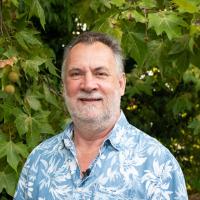
Agroecology Reading time 5 min
Thierry Candresse, exploring the nanoworld of viruses
Published on 28 November 2022
Each new virus is a fascinating entity
Naturalists dedicate themselves to the observation and study of nature. It’s outdoorsy work that appealed to Thierry since his school days. In his free time, Thierry would study botany and ornithology, but during his time at the National Agronomy Institute Paris-Grignon (INA P-G), he became interested in plant pathology. While working as a scientific research assistant at INRAE Bordeaux, Thierry completed his PhD in Josy Bové’s virology laboratory. This was followed by postgraduate studies in viral molecular biology in the United States. The opportunities and people he met along the way spurred Thierry to become a naturalist of the viral world. With boundless enthusiasm, he draws us into his nanoworld, still largely unexplored. “It’s the naturalist aspect that’s so interesting,” says Thierry. “Viral diversity is without parallel in the rest of the natural world. Viruses have no common denominators.” For a long time, viruses could only be studied based on the symptoms they elicit and the damage they cause. Now, viruses are identified using their RNA (a nucleic acid molecule that carries a virus’ genetic information). For some groups of viruses, 90% of what is discovered is new, and for Thierry, “each new virus is a fascinating entity”.
A nanoworld accessible via the virome
Pioneering work on plant viromes
Viruses know no borders and, through numerous collaborations, Thierry became internationally recognised for his work in fruit tree virology and his pioneering work on plant viromes. “Virome” refers to the ensemble of viruses present in a sample, a population or a place. “It means you have to be interested in more than just ‘your’ virus,” he explains. Thierry’s primary tools are high-throughput sequencers teamed with bioinformatics.
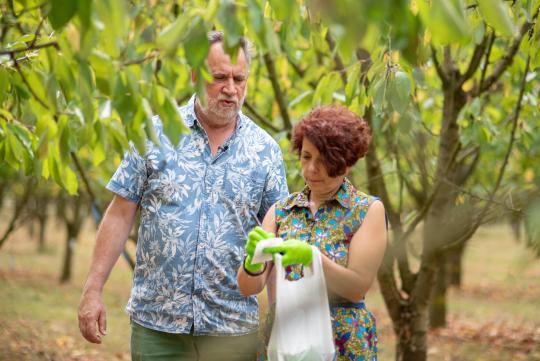
Thierry leads us directly to a plot of chestnuts presenting symptoms of mosaic disease — a cold case in the world of plant pathology, with the disease described over 60 years ago while its causal virus remained unknown. Thierry, working in cooperation with Italian colleagues, identified the virus only recently. This allowed a diagnostic test to be developed in partnership with the Interprofessional Technical Centre for Fruits and Vegetables (CTIFL) to guarantee the production of healthy plants and rootstocks. Back in the lab, Thierry touches on his work with insect-borne viruses of major crops, such as beet or cereal yellowing diseases. For 20 years, such viruses were controlled with neonicotinoid insecticides and were the subject of no further studies. But in order to move beyond pesticide use, it will be necessary to “start from the ground up, since whole swathes of knowledge will need to be revisited” he says. Working with microbiologist colleagues, Thierry developed the concept of the pathobiome, the microbial interactions that interfere with pathogens and their relationship to their host. This knowledge should allow new solutions and alternative phytosanitary products to be developed.
Bringing new control solutions
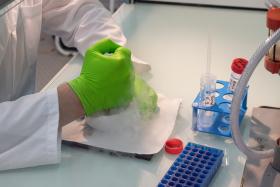
At the very end of the 2000s, the virome became accessible following the revolution in high-throughput processing, as Thierry began to explore techniques that had not yet been widely used. “We went all-in, and we’re still riding the wave now,” he says. His early research looked at fruit tree viruses, including sharka, a disease that has major economic impacts. During his studies of lettuce mosaic, Thierry looked at potyviruses and their interaction with plants. Together with his team, he demonstrated that the genetic resistance mechanism was the same as a mechanism found in peppers for a different virus, which had been identified by a colleague in Avignon. It seems that such mechanisms actually stretch across different parts of the plant kingdom. Thanks to this diversity of knowledge, Thierry and his team were able to develop a number of diagnostic tests, “one of the key elements for controlling viruses”. They also contributed to the development of resistant varieties and of control options, and developed recommendations for government agencies. To that end, Thierry spent eight years providing expertise to the European Food Safety Authority (EFSA) to define and update quarantine pest lists and the methods used to assess the risks they pose.
Managing and teaching, with a touch of whimsy
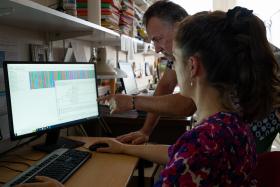
During his two terms as deputy division head (1998–2006), Thierry participated in the establishment and development of INRAE's Plant Health and Environment Division. He also set up a federated research institute for Agrosciences that today brings together more than 500 people, and led a project to create a large joint research unit with the University of Bordeaux, for which he was the director for 11 years. Throughout that time, Thierry always managed to keep a foothold in research. Looking back, Thierry is thankful that INRAE allows for the development of varied careers. The freedom and trust he was given were invaluable. Navigating between national and regional organisations required constant dialogue and quite a lot of balancing acts.
Talking about science in a captivating way
On receiving the Lifetime Achievement Award, Thierry said that it was a pleasure to be recognised, and that the Award also acknowledged the work of his team as well. “I certainly didn’t expect to be put in the same league as some past winners,” he says.
Illustrating current projects, Thierry said that during a recent walk along the Canal du Midi, he found some ash trees with marked viral symptoms, and brought samples back to the lab for analysis. “We identified an ash tree virus that had recently been described by German colleagues.” Crop companion plants, such as the European nightshade, as well as invasive plants are similarly studied. “It’s disruptive for my team, but they support me when I come up with new and slightly crazy projects” says Thierry. Such openness also allows Thierry to answer agricultural stakeholders’ enquiries on poorly studied species, as was recently the case for carrot or shallot.
Thierry enjoys teaching, and is mindful that “bringing master’s students into the lab is an investment, allowing you to recruit the best”. In Thierry’s laboratory, 40% of the scientists are University of Bordeaux staff; for his part, Thierry is involved in a doctoral school in Bordeaux. “He knows how to talk about science in a captivating way,” says Déborah, one of his PhD students. Over the course of his career, Thierry has managed to share his passion for research and his knowledge of the virome with many.
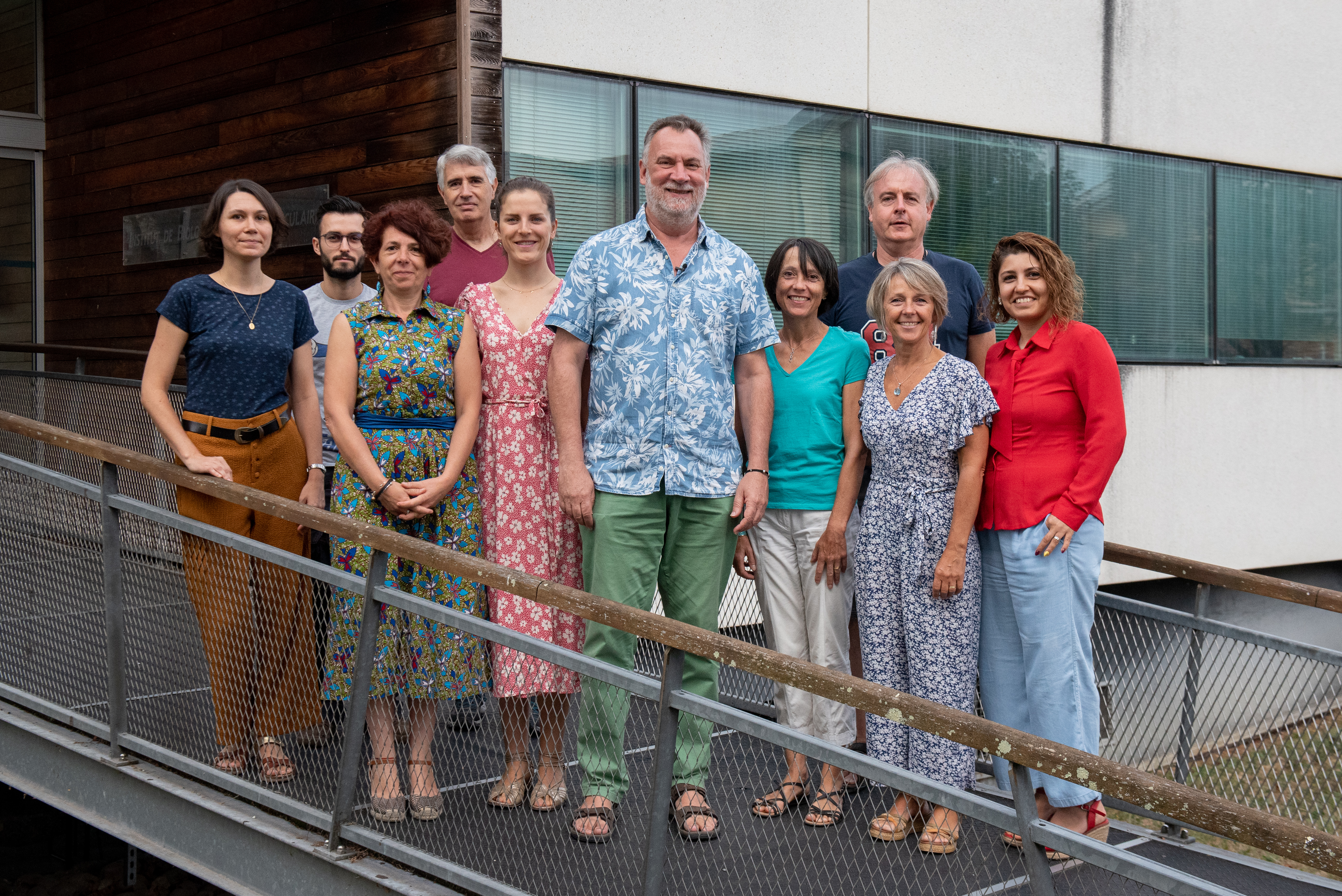
INTERNATIONAL AND EUROPEAN PERSPECTIVES
Over the past 10 years, more than 80% of Thierry’s publications have been in collaboration with researchers in other countries, and more than 50% for his career as a whole. As a laboratory director, he oversaw the establishment of one of the first International Associated Laboratories, on fruit biology with the University of Tsukuba in Japan. Outside Europe, Thierry has collaborated most extensively with Asia and Latin America, with all collaboration efforts aided by the way European research is structured. He cites the example of a current European project to set up a network of virus collections that will support the development of diagnostic tests, vaccines and tools for breeders. Recently, Thierry has also been involved in a Marie Skłodowska-Curie Action for doctoral training. “An amazing experience; but a huge and complex dossier to prepare”. The project brings together five other teams in Europe and had been submitted three times before finally being selected — only 5% of applicants are ever successful. Together with a colleague, Thierry is supervising two doctoral students who — along with the 13 other students in the project — benefit from shared additional training in intellectual property issues, CV writing, interview skills, viral ecology, etc. Each doctoral student also spends time working in labs in two different countries, which strengthens collaboration and allows for better understanding of the doctoral training in partner countries (Belgium, Slovenia, Spain, United Kingdom).
WHAT'S NEXT?
In two years’ time, Thierry has planned to take his retirement. His goals between now and then? “To pull back a bit from other activities and save some time to go wild with my research. I’ve never published as much!” As a part of two projects, Thierry and his team are exploring various pathogenic grapevine fungi. In particular, they are looking to see if viruses of these fungi may have a role in the complex condition known as grapevine decline, with the hope to identify new solutions in the fight against it. Thierry is also participating in a project spanning Réunion Island and other parts of the globe to see whether increased plant biodiversity is associated with increased virus diversity. The aim is to determine if one of agroecology’s foundational tenets — diversify to better manage pathogens — also applies to viruses. Another goal is to assess whether certain invasive plant species can become invasive because they are freed from a number of their pathogens during the invasion process. For another project, Thierry is analysing the virome for rapeseed and wheat to understand if and how the virome of these plants contributes to their pathobiome. The objective in the long term is again to find ways to reduce pesticide use.
MINI-CV
Widowed, one daughter
- Education
1994: Accreditation to supervise research
1985-86: Post-doctoral training USDA-ARS, Beltville (United States)
1984: PhD in plant virology
1981: Agricultural engineer at INA-PG - Career
2011-2022: Head of the Joint Research Unit for Fruit Biology and Pathology
2001-2015: Director of the Plant Systems Biology federated research institute, then deputy director of the Systems Biology and Ecology joint research framework
1998–2006: Deputy director of INRAE's Plant Health and Environment Division
1994: Research director
1986–1994: Research scientist
1981–1986: INRAE scientific research assistant (Attaché scientifique contractuel) - Hobbies
Botany, ornithology, mycology
Wine lover, keen cook
